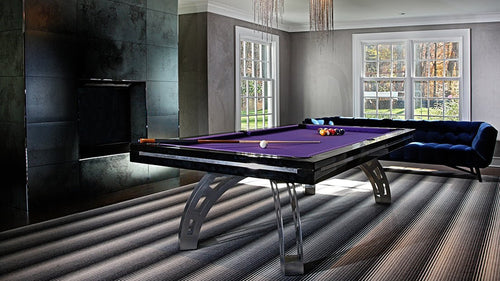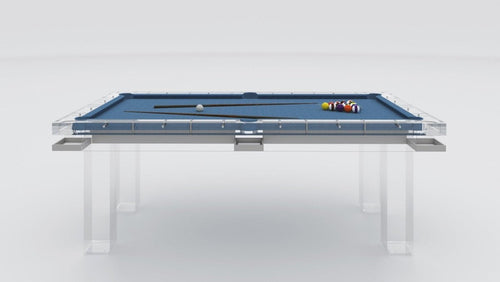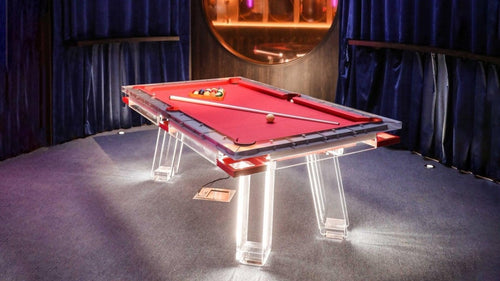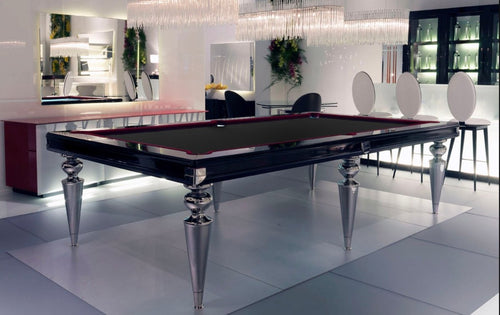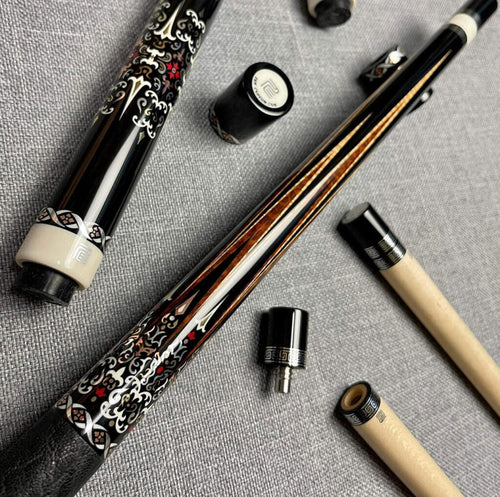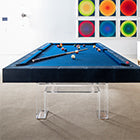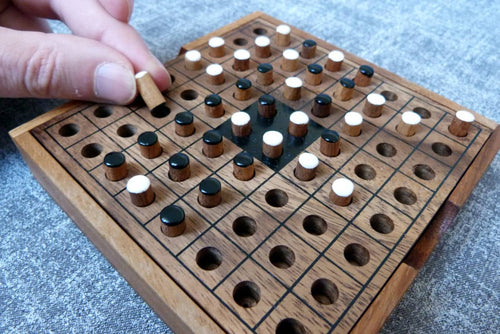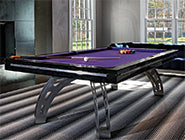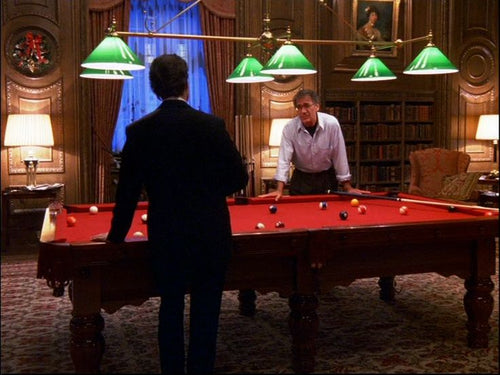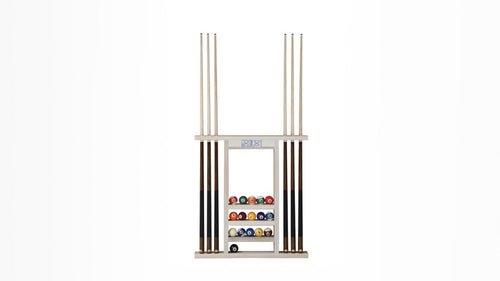Enjoy our modern designs
In pool, a “scratch” isn’t merely a small blunder—it’s a foul that can shift the momentum of an entire game. Understanding pool scratch rules is vital if you want to avoid costly mistakes and gain a competitive edge. Whether you’re new to billiards or a seasoned player, knowing how scratches work—and how to prevent them—will elevate your gameplay. Let’s explore what counts as a scratch, the various rule sets, and practical strategies to keep the cue ball out of harm’s way.
What Constitutes a Scratch?
A scratch occurs when the cue ball is pocketed, driven off the table, or (in certain rule sets) touches an object ball that’s already sitting in a pocket (creating a “full pocket” situation). In any of these scenarios, the opponent typically gains a significant advantage—commonly ball-in-hand, allowing them to place the cue ball anywhere on the table.
- Pocketing the Cue Ball: The most common scratch—sending the cue ball straight into a pocket.
- Driving the Cue Ball Off the Table: If the cue ball jumps or is knocked off the playing surface.
- Contacting a Ball in the Pocket: Some rules classify this as a scratch since the cue ball would have been pocketed if the pocket wasn’t already occupied.
While all scratches are fouls, not all pool fouls are necessarily scratches. Other fouls might include illegal jump shots, hitting the wrong object ball first, or pushing the cue ball with a double-hit. However, pocketing or losing control of the cue ball remains the hallmark of a classic scratch.
Types of Scratches

1. 8-Ball Scratches
In 8-ball pool, scratching while attempting to sink the 8-ball can result in an immediate loss if the 8-ball is also pocketed on the same shot. If the cue ball is pocketed but the 8-ball stays on the table, it’s typically a standard foul—your opponent usually gains ball-in-hand, and you continue playing.
2. Gameplay Scratches
These occur during normal play when the cue ball accidentally finds its way into a pocket or off the table. Generally, your opponent is rewarded with ball-in-hand, though some house rules require them to place the cue ball behind the head string.
3. Break Scratches
A break scratch happens right off the opening shot. If the cue ball is pocketed or jumps the table on the break, your opponent usually gets ball-in-hand, but it’s rarely an instant loss. Some rule sets, especially older or more casual ones, might enforce a loss if you scratch and pocket the 8-ball on the break, but this is less common nowadays.
4. Table Scratches
A “table scratch” refers to a foul when no ball is pocketed, yet the shot is still illegal—such as failing to contact any legal object ball. Although not a “cue ball in the pocket” type of scratch, many leagues still treat it like one by awarding ball-in-hand to the opponent.
Pool Scratch Rules by Governing Body
WPA & BCA Rules
Under World Pool-Billiard Association (WPA) and Billiard Congress of America (BCA) guidelines, scratching is taken seriously but isn’t an automatic loss unless the 8-ball is pocketed simultaneously. For example, in a typical 8-ball match under these rules:
- Scratch During Normal Gameplay: Opponent gets ball-in-hand, but you’re still in the match.
- Scratch While Pocketing the 8-Ball: Immediate loss.
- Scratch on the Break: Opponent gets ball-in-hand; game continues.
APA Rules
The American Pool Association (APA) can be stricter regarding scratches on the 8-ball. In some APA leagues, scratching while targeting the 8-ball (even if the 8-ball doesn’t drop) could be a game-ending foul. If you also pocket the 8-ball in the same shot, that’s definitely a loss. Always clarify which version of the APA rules is in play when you’re competing.
Do You Lose if You Scratch on The Break?
Generally, no. Most modern rule sets, including BCA and WPA, won’t force an automatic loss on a break scratch unless the 8-ball is pocketed at the same time. In that rare case, it’s considered a game-ending foul. Otherwise, your opponent simply receives ball-in-hand to start their turn, and the game continues.
How to Avoid Scratches in Pool

Master the 30° and 90° Rules
30° Rule: After contact with the object ball, a rolling cue ball tends to deflect about 30 degrees from its original path (on 1/4 to 3/4-ball hits). Recognizing this can help you gauge where the cue ball will go.
90° Rule: On a stun shot (no top or bottom spin), the cue ball and object ball separate at a near-90° angle. Learning this principle helps you predict and avoid natural “scratch lines.”
Practice Stop and Draw Shots
Stop Shots: Hitting the cue ball at its center so it stops dead after impact—excellent for controlling the cue ball’s post-contact movement.
Draw Shots: Striking the cue ball below center to create backspin, pulling it away from a pocket after contact. Ideal for tight positions where the cue ball might follow the object ball into a pocket.
Fine-Tune Your Stroke
Adding a slight topspin or follow-through can redirect the cue ball away from scratch lines. Meanwhile, over-elevating the cue for a jump shot can be risky—illegal jump shots or accidental mis-hits can lead to fouls.
Intentional Scratches: Strategic Foul Play
Though it might sound counterintuitive, advanced players sometimes scratch on purpose in tactical situations. For instance, in One Pocket or defensive 9-ball play, a well-timed intentional foul might limit an opponent’s scoring opportunities, especially when combined with rules like the “three-foul” requirement (where three consecutive fouls can result in a loss). This strategy showcases the deeper layers of pool where even fouls can be used strategically.
Conclusion
Scratches are more than just mistakes—they’re pivotal moments that can make or break a match. Whether it’s the 8-ball scratch that seals your fate or a well-timed defensive scratch in One Pocket, understanding pool scratch rules and mastering cue ball control are cornerstones of good billiards. By integrating the 30° and 90° principles, perfecting stop and draw shots, and staying vigilant about possible scratch lines, you’ll keep the cue ball in play—and your opponent on the defensive. Rack ‘em up and good luck!


